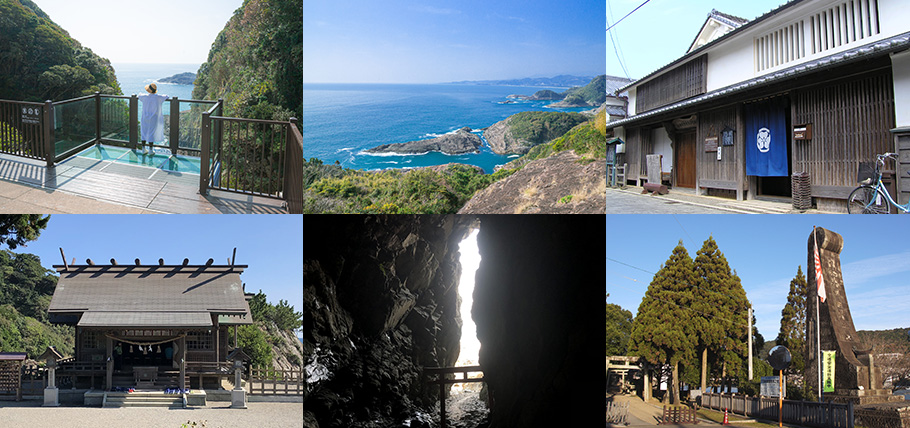Hyuga City Sightseeing Course (4 hours)*Mimatsu

This course takes visitors to spots in Hyuga City, which is surrounded by magnificent nature.
Departing from Hyuga Station, the tour will visit Maga-back, a scenic point at the tip of Hyuga Cape, Kurusu-no-umi, where wishes come true, and Oomikami Shrine, popularly known as "Hyuga no Oise-sama" (Ise Shrine in Hyuga).
This course also includes a walk through "Bizutsu," a town with impressive scenic beauty.
Minimum number of applicants: 2
departure time
| 1 | Departure 9:00 Return 13:00 (tentative) |
|---|---|
| 2 | Departure 13:00 Return 17:00 (tentative) |
Course Content
| 9:00 (13:00) | Departure: Hyuga Station |
| 10:10 (14:10) | (1)Horseback |
| 10:50 (14:50) | (2) The Sea of Kurus, where wishes come true |
| 11:40 (15:40) | (3)Omikami Shrine / Udo Shrine |
| 12:40 (16:40) | (4)Walking along the streets of Misuzu / Tateiwa Shrine |
| 13:00 (17:00) | Arrival: Hyuga Station |
Tour Fees
one person9,800Yen (incl. tax)Highlights of this course
-
(1)Horseback
A spectacular viewpoint located at the tip of Cape Hyuga.
There are two observation decks, one at Umaga-back and the other at the precipice of Umaga-back. The "Maga-back Cliff" has a glass observation platform called "Skeletcha! is installed on the "Maga-back Cliff," offering a spectacular view that will give you a thrilling experience. -
(2) The Sea of Kurus, where wishes come true
The huge reef is split 200 meters from east to west and 220 meters from north to south, and is called "Cruz," which means "ten letters" in Portuguese, because it looks like a cross. The combination of the cross and the rocky shoreline on the side forms the Chinese character for "come true," and it is said that if one prays here, his or her wish will be fulfilled. -
(3)Omikami Shrine / Udo Shrine
It is popularly known as "Hyuga no Oise-sama" (the Ise Shrine of Hyuga), and visitors can see the "Sazare-ishi" (a small stone with a small stone on top), which is mentioned in the national anthem "Kimigayo," and the "Ryu-no-tama," which is said to be the remains of ancient people's belief in the dragon god.
The adjacent Udo Shrine is also a popular power spot, with a silhouette of a rising dragon emerging from the shrine inside the cave as you view the entrance. -
(4)Walking along the streets of Misuzu / Tateiwa Shrine
Misuzu, which prospered as a port town of the Takanabe-Akizuki clan, has an impressive scenic townscape, especially in the Tachinui district, which has been selected as a national important preservation district for groups of traditional buildings.
This site is also the stage of the myth of Hyuga, in which Emperor Jinmu, the first emperor of Japan, sailed eastward in a boat. It is said that Emperor Jinmu, the first emperor, prayed for victory in battle and safety at sea during his expedition to the east, and that the shrine was later built during the reign of Emperor Keiko.
A large rock on which Emperor Jinmu is said to have sat is enshrined in the precincts of the shrine as "Oshikakei-iwa.